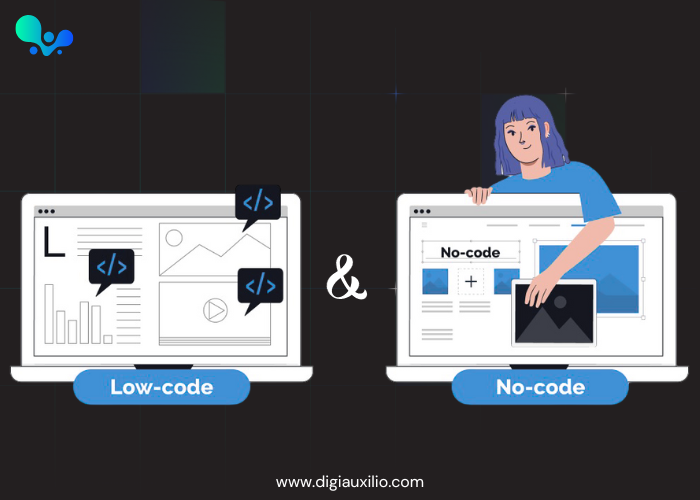Businesses are constantly under pressure to innovate, remain ahead of the competition, and introduce new products as soon as possible. In the past, developing apps or digital solutions required a team of skilled developers, lengthy development cycles, and significant financial outlays. But suddenly things are changing. Because low-code and no-code platforms are faster, less expensive, and accessible to all users—not just computer experts—organizations are transforming the way they produce software.
What Are Low-Code & No-Code Platforms?
- With low-code platforms, developers can create fully functioning applications with little coding. These platforms come with features such as drag-and-drop design, pre-made templates, and codeable design blocks, which enable further development if needed.
- Unlike no-code platforms, which target technical individuals, these platforms are designed for business professionals like owners, marketers, and managers, allowing them to construct applications, workflows, and websites without coding.
Both approaches reduce the dependency on large development teams and speed up digital transformation.
Why Are Businesses Adopting Them?
1. Speed & Agility
With low-code and no-code platforms, businesses can create applications in a matter of weeks, rather than the months it would take without such tools. As an example, some retail brands are able to create mobile applications to help with seasonal promotion in a short amount of time.
2. Cost-Effective Development
No-code platforms like these help to reduce the expense of hiring a fully-equipped developer, especially in areas such as the USA, UK, and UAE, where salaries are growing rapidly. These platforms help to maintain cost-effectiveness by lessening the amount of team members needed for development, without losing impactful solutions.
3. Empowering Citizen Developers
With no-code platforms, the many non-programmers in the workplace can become ‘citizen developers,’ innovating and streamlining workflows by eliminating the IT team bottleneck.
4. Flexibility & Scalability
These platforms are not just for small projects. Many now support enterprise-level applications and integrations with CRMs, ERPs, and APIs, ensuring businesses can scale as they grow.
5. Bridging the IT Skills Gap
There is a shortage of skilled developers worldwide. Companies find it hard to fill their digital needs; therefore, low-code/no-code reduces the reliance on the scarce talent pool allowing more people to be involved in the development process.
Real-World Applications
Low-code and no-code tools are not just hype—they’re already transforming industries:
- Healthcare: Clinics use no-code apps to streamline patient check-ins and manage appointment scheduling.
- Finance: Banks deploy low-code platforms to quickly roll out customer-facing portals and loan applications.
- Retail & E-commerce: Businesses create personalized shopping apps and integrate with payment gateways without full-scale coding.
- Startups: Entrepreneurs validate ideas faster by building prototypes without heavy development costs.
Challenges to Consider
While the benefits are significant, businesses must also recognize the challenges:
- Customization Limits: For really complex applications, no-code platforms might not be flexible enough.
- Security Risks: Enterprise-level security, which is essential for sectors like healthcare and finance, is not available on all platforms.
- Vendor Lock-In: Companies may get reliant on just one platform provider, which would make relocation challenging.
- IT Oversight Needed: Governance and IT oversight are necessary for ensuring compliance and scalability, even with no-code tools.
The Future of Low-Code & No-Code
75% of new apps will be developed with low-code or no-code technologies by 2026, predicts Gartner. These platforms will be essential to innovation as more companies adopt digital-first strategies.
Additionally, app development gets even more clever as AI and low-code technologies combine to advise procedures, design automatically, and anticipate user needs. In this sense, as organizations move forward in the years to come, evolution will translate into more reliable solutions assisted by AI through no-code.
Conclusion
Low-code and no-code platforms mark a gigantic change in how business thinks about tech by democratizing app development so that firms can innovate fast, cut costs, and remain agile in a competitive market.
For startups, SMBs, and even large enterprises, adopting low-code/no-code platforms is no longer just an option—it’s becoming a strategic necessity for digital transformation.
